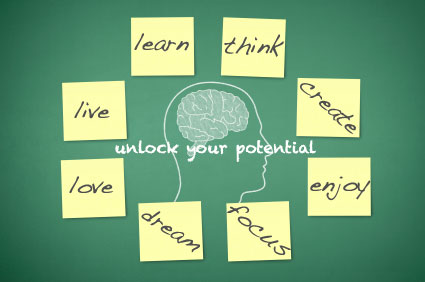What is Neurofeedback?

Neurofeedback is brain exercise. We observe your brain in action from moment to moment by monitoring your brainwaves. We show you your brain activity and we help you change it by rewarding shifts toward a more functional and stable brain state. It is a gradual learning process.
Neurofeedback is also referred to as EEG Biofeedback or Neurotherapy. The electroencephalogram (EEG) is another name for the brain wave recordings and, in this context, biofeedback refers to the process by which you learn to change your brainwaves and hence change your control of brain states.
How can Neurofeedback help?
Neurofeedback training improves attention, cognitive abilities, and emotional regulation. Neurofeedback can help to reduce or eliminate a number of common symptoms such as anxiety, stress reactions, depression, sleep problems, headaches, migraines, and emotional distress. Neurofeedback can also help relieve a variety of conditions such as mood swings, PMS, and organic brain disorders including seizures, stroke, and traumatic brain injury.
Neurofeedback is training in self-regulation. Good self-regulation is necessary for optimal brain function. Self-regulation training enhances the function of the central nervous system and thereby improves mental performance, emotional control and physiological stability.
Does Neurofeedback cure symptoms or conditions?
In the case of organic brain disorders, it is just a matter of getting the brain to function better rather than curing the condition. In the case of disregulation there really is no disease to be cured. Where disregulation is the primary issue, self-regulation is likely the remedy. But the term cure again would not apply.
Who can benefit from Neurofeedback?

Individuals of any age can benefit from EEG training. Neurofeedback can help a variety of childhood problems including bedwetting, nightmares, attention deficits and other forms of disrupting and disturbing behaviors. Neurofeedback can assist adolescents who might struggle with anxiety and depression, or drug and alcohol use. Neurofeedback can help maintain good brain function as we age. And peak performers use EEG training to enhance their abilities in sports, business and the arts.
How is Neurofeedback done?
Sensors are attached to the scalp with EEG paste to record your brainwaves. It is painless and does not involve the application of any voltage or current to your brain, so it is entirely non-invasive.
A computer processes the brain waves and extracts certain information from them. The ebb and flow of your brain waves and the specific information obtained from them, are shown back to you in the form of a video game. You are instructed how to play the video game using only your brainwaves. (Everyone can do it.) The specific brain wave frequencies we reinforce and the sensor locations on the scalp are unique to each individual.
What happens if Neurofeedback clients are taking medications?
With successful neurofeedback training, medications targeting brain function may no longer be needed, or they may be needed at lower dosages, as the brain takes over the role of regulating itself. It is important for clients to communicate with their prescribing physician regarding neurofeedback and medications.
If Neurofeedback can do so much, why haven’t I heard about it before?
Neurofeedback is not yet taught in most medical schools or psychology graduate programs. Many professionals are therefore unaware of the power of this technique. The field is growing rapidly and as it does more professionals will be informed and educated in neurofeedback.

To take part in this program please call us at 907.223.1177
Homecoming for Veterans is a national outreach program to provide free Neurofeedback training for veterans for the rehabilitation of Post-Traumatic Stress Disorder and issues of brain performance resulting from traumatic brain injury, blast injury, concussion, whiplash and chemical exposure.
With such training, rapid recovery can be achieved for the relief of PTSD symptoms that include sleep problems, pain, irritability, anger and rage, as well as cognitive deficits. The training can also help soldiers recover from drug, alcohol, and tobacco dependency.
The training is based on reinforcement of better regulated brain behavior as judged by the EEG. The repetition of this exercise for a number of thirty-minute sessions leads typically to improved cognitive function and improved emotional control.
If you know someone who could benefit from this program please refer them to hc4v.org › to find a local provider.
